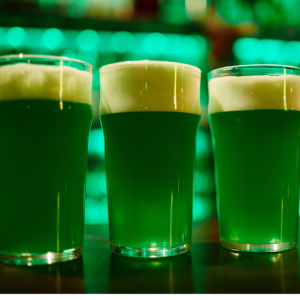Any Health Risks to Raising a Glass of Green Beer?

When the calendar turns to March, Americans love to celebrate Irish culture, often with St. Patrick’s Day parades, corned beef and cabbage and a frosty mug of green beer.
The colorful brew is simply regular beer dyed green using food coloring or natural ingredients like spirulina. While there are no special ingredients or additives to make green beer either healthier or more harmful than “normal” beer, the health impacts may surprise you.
The good news? Some types of beer contain antioxidants like polyphenols, which have been linked to a reduced risk of heart disease and certain types of cancer.
However, there are some health drawbacks to green beer – especially if you drink too many in a short period of time. Four to five alcoholic drinks within two hours is considered excessive and consistently drinking at that rate can cause health issues per the Centers for Disease Control and Prevention.
Here are some things to consider:
- Alcohol content: Alcohol is a depressant and can impair judgment, coordination and cognitive function.
- Overconsumption can lead to liver damage, high blood pressure and other health problems.
- Calories: Beer is high in calories, with some varieties containing as many as 200 calories per bottle.
- Dehydration: Alcohol is a diuretic, which means it can cause dehydration and electrolyte imbalances in the body.
- Food coloring: While food coloring is generally considered safe, some people may have an allergic reaction or experience gastrointestinal discomfort after consuming large amounts.
You don’t need bartender skills to indulge in a green beer on March 17. Simply place a drop of green food coloring (liquid, not gel) into the bottom of a glass, then fill with light-colored beer (or a nonalcoholic alternative) and enjoy!
Related Blogs
Think Green (and healthy!) on St. Patrick’s Day